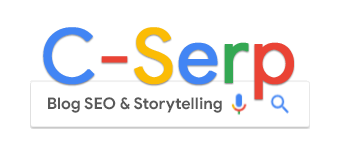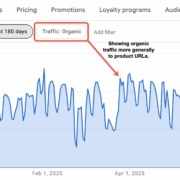Unlocking organic shopping: 8 insights from Google’s free listings

Google’s free listing features have expanded rapidly in recent years, becoming a staple search feature for ecommerce businesses globally.
Working heavily in ecommerce, I regularly encounter issues with the capabilities of stores for ranking within free listing results.
Because of the heavy overlap among free listings and ads, both primarily managed via product feeds in Google Merchant Center (GMC) Next, Google’s documentation for troubleshooting issues isn’t always easy to find.
This article covers eight insights when working with organic shopping for stores that are important to understand when trying to improve their free listings’ visibility.
1. GMC Next organic reporting
There is a lot of confusion surrounding the “organic” analytics reporting in GMC Next, with the descriptions in Google’s documentation not being particularly clear.
Many are led to believe that the data shown in the dashboard is purely free listing-related traffic for stores within the Analytics > Products tab.
The reporting states that this is “traffic to product pages on your website” when filtering by organic.

The catch is that this reporting isn’t relevant to any specific efforts with product feeds and free listings.
Instead, the free listings traffic is mixed in with other organic traffic sources, which essentially makes the reporting redundant.
There is a reference to this within the GMC Next product performance documentation, which states that “clicks” relate to:
- “The total number of clicks on your products on Google that led to visits to your product detail pages,” unrelated to any specific product feed-related activities.
With this in mind, GMC Next organic reporting isn’t particularly useful to SEO professionals from a troubleshooting standpoint, aside from analyzing broader trends.
Instead, focus on the Merchant listings filter in Google Search Console and the Organic shopping channel in GA4, which can help you understand revenue impact.
2. Losing branded searches
A result of the global free listings rollout has seen stores lose clicks for branded queries.
This can be seen through a declining CTR over time in GSC due to the various types of free listing units (popular products, deals, in stores nearby, etc.) now occupying a significant amount of space.
Within each free listings unit category, the recommendation for improvement does vary quite a bit.
For instance, within the In stores nearby unit, this is primarily for stores with a physical presence that have a local inventory feed within the region.
For the search query “adidas” in Melbourne, Australia, I can see that the unit is currently showing as the first grid type in search results, resulting in Adidas Australia URLs being pushed even further down the page.

The issue for Adidas Australia is that while they can show a product within the product comparison grid (if the product is available online), they can’t have their site show as first within the grid preview due to the integration of in-store and online stock.
In this example, you can see that the Adidas Australia store is actually located closer to me, compared to the Rebel Sport site (4.8km vs. 4.9km) and has a lower price, which would more likely result in them taking the top position within the retailer comparison view if they had a local inventory feed integration within this region.
Dig deeper: Branded search and SEO: What you need to know
3. ‘Top Quality Store’ influence
I constantly mention to clients that an aspect of organic shopping in general is achieving and maintaining the “Top Quality Store” badge.
The rating system applies to all countries, but the badge can only appear within certain regions at this time, such as the U.S., Australia, the U.K., and more.
Within the Page quality report in GMC Next, all of this information is clearly laid out for you, providing a breakdown of where your store sits in comparison to others within a similar category, focused on the following core areas:
- Shipping experience: Delivery time, delivery cost.
- Return experience: Return window, return cost.
- Browsing experience: High-res images, images per product, website speed on desktop and mobile (referencing Core Web Vitals, h/t Tony McCreath).
- Purchase experience: Promotion disapproval rate, e-wallet types accepted.
- Store rating: Overall rating, number of reviews.
The “Top Quality Store” badge is something that all stores should strive for and is something that is realistic to achieve if you understand how each of the reports works and know where the clear gaps are.
4. Separate paid and free listing feeds
A question that sometimes comes up concerns stores wanting to experiment with having separate feeds for both paid and free listings.
This would allow stores to have more flexibility around what they serve within ads and what appears in free listings.
In my experience, it’s best to keep the two in the one primary feed.
I’ve yet to come across a situation where it makes sense to split the two.
Any changes that are made to free listings should be fine for ads as well, as they should be considered overall improvements rather than “hacks.”
There is, however, the ability to apply certain features within GMC Next to specific surfaces.
In the case of setting up a coupon code promotion, you have the ability to apply this to only free listings as a surface if it makes sense.
Here’s what a primary feed looks like when all surfaces (referred to as marketing methods) are applied within a single feed:

Note: If an account has a policy issue that prevents ads from showing, and you try to submit a separate feed only for free listings, I wouldn’t rely on this working.
In my experience, the flags applied to accounts are beyond just ads, with free listings also being impacted.
I also have my own conspiratorial experiences with the need for Shopping ads to be running in some capacity for free listings to perform well.
Dig deeper: Google’s AI-powered Shopping ad ecosystem: Where to focus your strategy
5. Free local listing challenges
Integrating a local inventory feed for online stores with physical locations has to be one of the most challenging aspects of free listings.
This feature is classified as a free local listing and relates to the Adidas example highlighted earlier.
For this integration to be possible, there are a lot of layers of complexity that need to be managed in order to become eligible for the surface.
Stores need to have accurate local inventory management processes and an intricate technical implementation across various tools.
As an example, a client of mine uses a feed management system, as do many large ecommerce stores.
The challenge was that, for some reason, none of the clients of the feed management system had ever enquired about local inventory management, so we were the first ones to push them to enable this ability.
My client already had the correct setup in place (in terms of PDP in-store product search functions), but it took months for the feed management tool to provide support.
This was a major roadblock, as switching to a new provider wasn’t possible due to the integration.
Enabling the system simply required turning on free local listings in GMC Next and setting up a separate primary product feed for the additional dataset.
Dig deeper: Google Merchant Center adds AI-powered product filtering
6. Restricted purchase exclusions
For some stores, it isn’t possible to be eligible for Shopping ads or free listings due to how the product pricing is represented on product detail pages and how the checkout experience works.
The difficulty around this point is that Google’s communication is minimal, to the extent that GMC Next won’t send you specific guidance on what the problem is.
The dashboard can display without issues when there has essentially been a site-wide exclusion.
Within Google’s restricted purchase documentation, it states that there are reasons why accounts could be impacted by restricted purchase issues:
- Purchases are limited to businesses rather than individuals.
- Business information details are required to be completed as part of the checkout process.
- Content and/or purchases are unavailable based on a customer’s location.
If your store has any of the issues above after an independent assessment, this could be the reason why the store has the inability to rank within free listings.
And in my experience, if an ecommerce store has ineligibility within GMC Next, you’re essentially fighting an uphill battle when it comes to SEO.
Similar to restricted purchase issues, I’ve also experienced similar account-wide exclusions for stores that offer products to be rented rather than bought.
Depending on the size of your business, your account may be scrutinized less, with smaller businesses sometimes getting away with going against these guidelines.
7. Auction pricing implications
Similar to restricted purchase issues, stores that have an auction component and require users to bid to purchase rather than being available for a set price can encounter issues.
This brings some complexity into the product feed setup, where Google doesn’t have a reliable set of attributes to reference within free listing results.
Omitting this information may not result in exclusion, but there may be a subtle dampening effect that limits the visibility of those products that appear within free listings.
This is more of an edge case compared to the other examples in the article.
However, it occasionally arises with very large sites that use an auction-based product model, and it can be challenging to overcome when trying to maximize free listing visibility.
8. AI Mode ranking principles
When trying to rank your products within Google’s AI Mode free listings, the same principles that apply to standard free listings apply here, based on eligibility.
The key difference is that AI Mode surfaces product recommendations for more complex queries, pulling from multiple data sources (with citations) through Google’s Shopping Graph.
The results are less consistent and noticeably different from traditional search.
Now that AI Mode is officially showing outside of the labs closed beta as of June 13, 2025, free listings traffic will show within the performance reporting in Google Search Console under the Merchant listings filter.
It is not currently possible to distinguish between this traffic source and other free listings traffic.
Dig deeper: Shopping graph optimization: The future of ecommerce SEO
Organic shopping is only becoming more important
For ecommerce stores, organic shopping as a surface is growing rapidly and is only becoming more important with the introduction of various AI-related experiences.
It’s also a component of ecommerce SEO that essentially requires its own area of specialty due to the complexity involved.
The primary motivating factor here should be the revenue generated, which can be considerable over time.
Take these organic shopping insights into account next time you’re working the free listings surface to fast-track your understanding.
I’ll keep testing in this area and making sure to continue sharing my learnings.


